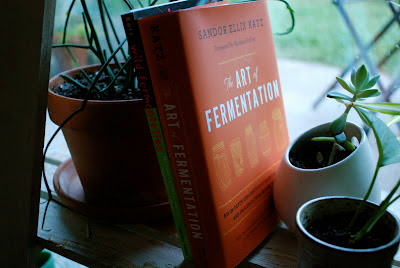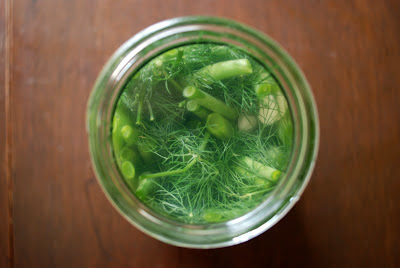Most weekends in May have been spent working hard in the garden. The growing season is early this year, so it's a challenge to keep up! Yet we're making good progress on the water garden (yay!) and moved a giant pile of rocks that was next to it. Now that area is much more beautiful with small native plants we planted. I'm so excited about this new spot in our garden! I hope to follow up with a post on it next month.
This month we enjoyed lots of sugar snaps, which are now gone, but with okra seeds planted in their place. For lunches and dinners we have been eating many salads with arugula, buttercrunch, endive, and purple lettuces. As the temperatures rise, those salad days are also coming to a close. The young tomato plants that we started from seed are now in the ground, with pesto and thai basil plants nearby. Green been plants are growing, the grapevines are heavy with tiny green grapes, and a row of carrots are waiting to be dug up. Bouquets have been full with daisies and bachelor buttons. This week the first echinacea and African daisies opened and so begins the transition from spring to summer. I eagerly await the first zinnias!
This month we picked a lot of kohlrabi, which grow great around here. In a previous post I mentioned one of the ways we like to fix kohlrabi is in a stir fry. Last night I made a stir fry with garlic, shiitakes, kohlrabi, and bok choy, and the last of the sugar snaps, all from our garden. It was delicious! There was also onion from the store as ours aren't ready yet. If you need a (sort of) recipe for this, here's how I made it.
1. Melt about a tablespoon of butter in a wok or pan on medium heat and add chopped shiitake mushrooms. Sprinkle with a little sea salt. The mushrooms soak up the butter fast, but continue to cook them for a few minutes until they shrink a bit and release some liquid.2. Add sliced onion and cook for a few minutes. At this point the pan was a little dry so I add a small drizzle of wok oil, flavored with thai basil and lemongrass.3. Add chopped garlic and the chopped kohlrabi. Stir and add a swirl of soy sauce. Cook the kohlrabi a few minutes until they begin to get just tender.4. Add the chopped bok choy, stir, and put the lid on.5. Add the sugar snaps and a cup of hot miso broth. Simmer just until the bok choy and sugar snaps are tender.6. Add soy sauce and sriracha sauce to taste. Serve over rice or noodles if you like. Enjoy!























